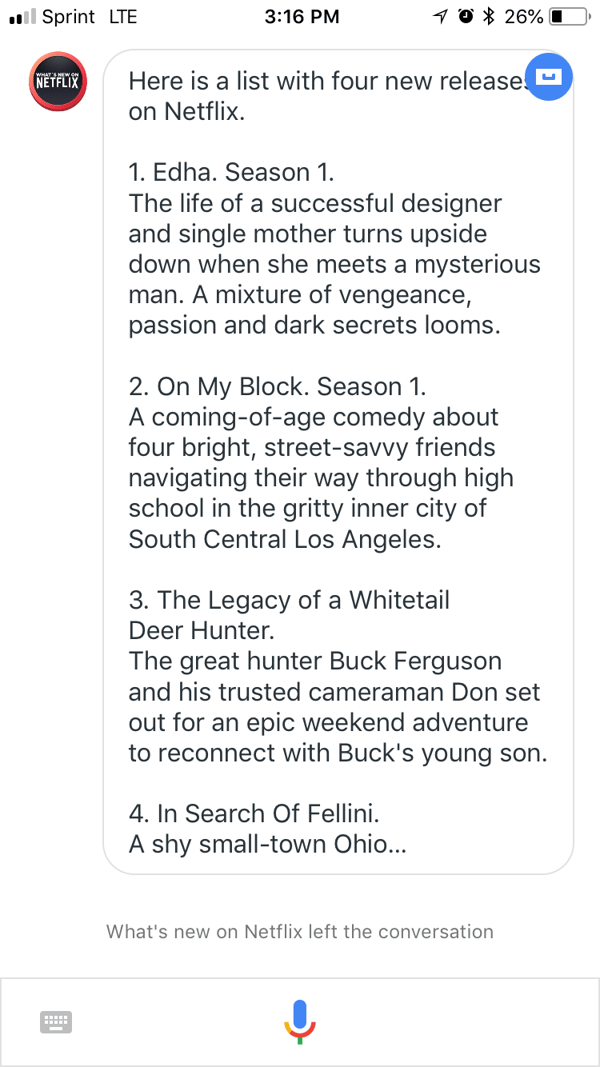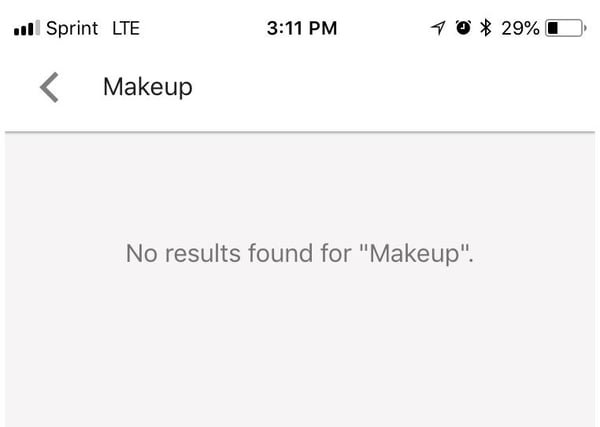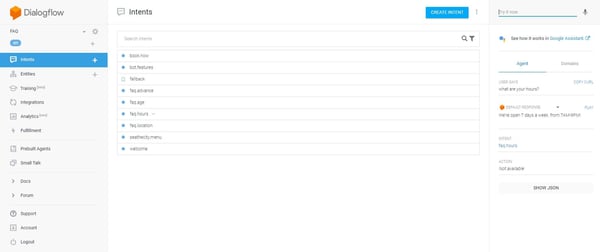Voice search is an undeniable growing trend, and marketers who are not preparing for the shift away from the keyboard are going to feel left behind in pretty short order. The stats on the rise of voice search make it pretty clear, this is something marketing practitioners, CMOs, and CEOs all need to be thinking about.
But how exactly can your brand leverage the early mover advantage in this evolving landscape? This article aims to provide actionable insights on how you and your team can get ready for the voice search revolution.
The Stats on Voice Search
Google has announced that 20% of mobile Google searches are made using voice search and that 60.5 million people in the United States use some type of digital assistant, like Siri, Alexa, or Cortana. Those 60.5 million people make over one billion voice searches per month. In addition, 22% of voice searchers are looking for local content and information about brick-and-mortar businesses, and 21% of voice searchers are looking for information about opportunities for fun and entertainment.
“Now that we have crossed over a billion voice searches per month through Voice Assistants, we are seeing real ‘search diversity.’ Consumers are going beyond asking for Spotify and timers, and starting to ask ‘What is the best watch for scuba diving?’ and “Where can I buy Estée Lauder foundation?” - Adam Marchick, Alpine.AI
With this knowledge, many marketers and companies are concerned about how to utilize the power of voice search, and do not feel they have a clear strategy established. As of now, Google uses the information in featured snippets to answer voice search queries. If your page is not ranking for a featured snippet, it will not be offered as a result to a voice search. With so much traffic moving to voice search and a massive percentage of voice search being used to find local information, it is important for businesses and marketers to know how to get their page to Position V.
What is “Position V”?
“Position V is the featured voice search result read aloud by either Alexa, Google or any other voice search assistant.” – John Morabito
How to Optimize for Position V
As it stands right now there are two primary methods of optimizing for voice search.
- Optimize for standard Google results, which then leads to featured results, and hence voice search results.
- Take advantage of the early mover advantage within the voice skill/app ecosystem.
Method 1 Sub-Components
Optimize Your Local Listings
As noted earlier, 22% of voice searchers are looking for local content and information about local brick-and-mortar businesses. This means that if you’re not actively managing your local listing data for your brick and mortar business, you’re missing out on the opportunity. Using a partner like Yext to manage your local data can be instrumental to your local success.
Optimize for Featured Snippets
Optimizing for featured snippets is perhaps the easiest idea to grab onto when it comes to voice search. Basically, if you’re the chosen answer box featured snippet in Google search, you’ll be presented as the voice search result in many cases. Moz and other blogs have done a fantastic job of walking through how to optimize for these results but the basic idea is to directly answer questions, structure your content with HTML, and be concise. There’s more to it than, that but we could go on forever about just this topic, so instead read more here, here and here.
Structured Data
Results that are driven by Google SERP enhancements make up a huge share of voice search results. Recipe cards, news, movies and more are all served in voice searches with help from structured data. Make sure to mark up all of your content with whatever you can find on schema.org. This year at Pubcon Gary Illyes said that Google is always looking at usage data from schema.org markup types and regularly rolls out new result types based on the adaptation of markup types. This means even if you’re not seeing markup driven results in voice search today for your types of content, but a markup exists…USE IT. For example, job boards saw a HUGE shift when Google took over the results with their own native job listings. Could real estate or e-commerce be next?
Make sure you’re using all available markup types for your stuff, including the markup for article, recipes, product, address and stay ahead of the curve.
We talked to 2 of the worlds most prolific SEO speakers and got their thoughts on Structured Data:
“It’s important that we stop seeing websites as purely aimed at human audiences. Increasingly, machine systems like search engines are our primary audience. When users perform searches with voice assistants, they never see your website. So how do we stay visible? It’s all about making your content machine-readable. If machines can understand your website, they can use your content in the right contexts, such as voice search. Design and build your sites to be machine-readable.”
- Barry Adams, Polemic Digital
"Structured data has never been more important. In voice search, the knowledge base is checked first for answer capacity and the gaps are filled in by the largely unstructured and 'fuzzy' data from webpages. Keep working on enhancing pages with schema data and in the absence of this turn unstructured data text-heavy content into semi-structured data with headings and clearly structured topical blocks." - Dawn Anderson, Move-it Marketing
Method 2
Create a Native App or Skill and Optimize it for Voice Search
Creating a native app or skill for either Google home or Alexa is no easy task. Companies like Alpine.ai are making it easier for brands, but you need to be ready to do the work. If you want to build your own native app instead, either in-house or with a low-cost developer, Google offers tutorials on how to utilize the power of apps and actions. Google says that “Apps for the Google Assistant are conversational in nature and let you extend the Assistant’s functionality with your own conversations that let users do things like schedule appointments, play a game, or get updates about the latest news.” Learn more about how to build an app for your own business here. It may require skill and experience to create these apps but the payoff can be huge. Gaining wide adaptation of your app can generate brand loyalty, brand visibility, a linkable asset for you to promote, and even help to convert sales.
Some companies and brands have already begun to utilize the Explore function of the Google mobile application and have put out their own applications, like Netflix. However, these applications that are being developed are very basic and oftentimes fall flat. Using Netflix’s example, you can ask Google “OK Google, talk to What is new on Netflix?” and all that is given to the user is a very basic description of 3 or 4 shows that are new on Netflix and then the application leaves the conversation. Netflix has incredible amounts of data that could be used to create a much more customized user experience that ultimately would guide searchers not to just what’s new, but what’s they will likely enjoy based on previous viewing behaviors. 
Some apps miss the mark while others are leaving entire prevalent keyword queries unanswered and leaving gaping holes in the market. For example, if you are to search “Makeup” in the Explore function of the Google mobile application, there are no skills/apps that developers have made to be used by Google that cater to queries about Makeup. We checked out clothing, real estate, pet, and business and every search revealed totally lame results. For content creators and brands, NOW is the time to start thinking about entering into creating your own skills and apps for voice.

Search within Google Assistant App under “Explore”
Voice Search Optimization - App Indexing
To understand the full breadth of opportunity here, try to imagine that it is the early 90s. The internet is still something everyone wants to use, but not every business is on. Now imagine a time where there’s even fewer business there. In some ways, the opportunity for brands willing to leap forward and create native apps for voice assistants is the same. The beauty of it is that these types of apps are not that difficult to make. Companies like Alpine.ai help to make it even easier, but you can leverage the insane power of Google's AI learning through their tool Dialogflow.com...all for free.
Here's a peek at a chatbot we're working on for a client FAQ.
Usage Begets more Usage
Everyone at this point is pretty onto the fact that Google is using user engagement metrics of one kind or another to impact rankings. What most people don’t know is that this also applies to the way Google ‘ranks’ or more accurately serves singular results for native assistant apps. Basically, if your brand builds out a Google assistant app, and people use it more often, that increases your chances of being served for a result in the app when a general non-branded question is asked. For example, let’s say you’re a retail clothing brand and you have a style guide app. If you have a large audience that uses the app regularly, this may increase your chances of being served as the result for general style questions people may ask.
“It is clear that Google is rewarding high-quality Google Assistant apps and is providing quality guidelines. For example, the less conversation errors you have, the better chance Google recommends you. Now is the time to create a voice app and learn how to deliver great consumer experiences, to fully benefit from the rising wave of voice searches.” - Adam Marchick, Alpine.AI
Authority in the App Ecosystem
Very rarely do I have an inside tip, but this one is a good one. Through conversations with folks at Google, one of our agency partners learned that the authority of a given website is tied to their “official” app in the Google Assistant ecosystem. This means if you are an early mover into this space you could have a moment of golden glory in the sun where your site is the most authoritative one with a native app. Here is official documentation showing how you can connect your other properties (sites, Android apps) to your Actions app for business benefit.
Your Customers Want To Talk
Even within the discipline of SEO, optimizing for voice search isn’t just about featured snippets. We should as marketers also be thinking about how to have the most meaningful conversations we can with our customers. It’s important to be there to support shoppers and brand loyalists where ever they look for you. In the Google Assistant ecosystem, users can trigger third-party apps with the prompt “Ok Google, Talk to..{brand name}”. Don’t you want to be there to answer?
Are you Ready to Optimize for Voice Search?
Stella Rising helps fast-growth emerging brands as well as established and enterprise brands with their SEO efforts. If that sounds like you, reach out today to learn more about how we can help.




COMMENTS